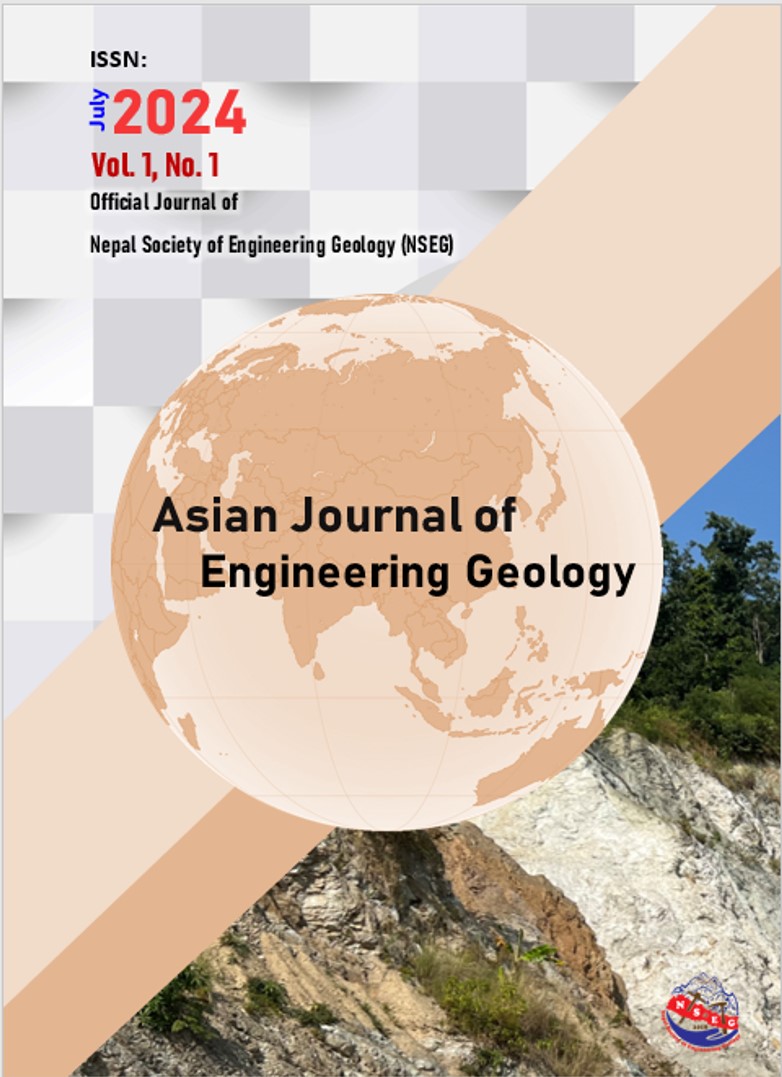Road Side Slope Stabilization Using Ground Water Management at Far-Western Nepal
Keywords:
Drainage wells, Horizontal drain, Geotechnical investigation, Geological investigation, Numerical analysisAbstract
This study investigates landslide susceptibility in Nepal's Far-Western region, particularly Sudurpashchim province, where monsoon rains and rugged terrain increase landslide risks. A major landslide on the Mahakali Highway, prompted analysis using field investigations, borehole drilling, and Electrical Resistivity Tomography (ERT) to assess lithology and soil stability. Slope stability analysis shows that rainfall-induced water level rises weakened soil strength, but mitigation measures like slope benching and dewatering improved the factor of safety (FOS) from 1.20 to 2.49. Wells and horizontal drains were proposed to stabilize the area by reducing groundwater levels.
References
Acharya, K. P., Bhandary, N. P., Dahal, R. K., and Yatabe, R. (2016). Seepage and slope stability modelling of rainfall-induced slope failures in topographic hollows. Geomatics, Natural Hazards and Risk, 7(2), 721-746.
Choi, K. Y. and Raymond W.M. C. (2013). Landslide Disaster Prevention and Mitigation through Works in Hong Kong. Journal of Rock Mechanics and Geotechnical Engineering, 5(5), 354–65.
Tiwari B. and Ajmera B. (2023). Advancements in Shear Strength Interpretation, Testing, and Use for Landslide Analysis. Chapter In: Progress in Landslide Research and Technology, 2 (2), 3–54.
Downloads
Published
Issue
Section
License
Copyright (c) 2024 Nepal Society of Engineering Geology (NSEG)

This work is licensed under a Creative Commons Attribution 4.0 International License.




